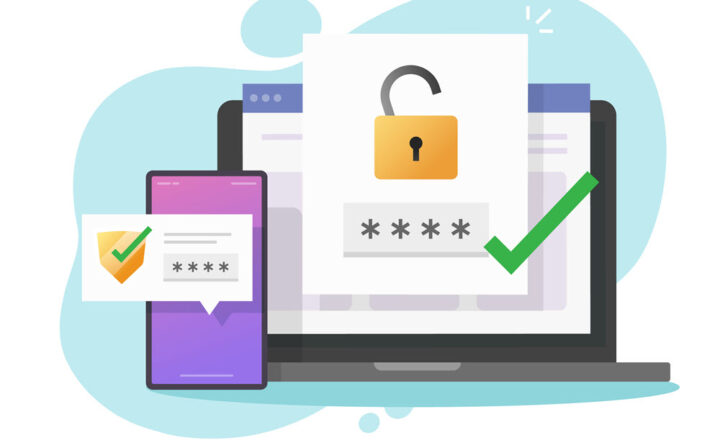How to check user access and permissions for a file or folder on a SharePoint site
This happens more often than not, so I decided to finally write a post on this very important topic. As you upload and share documents from Teams or SharePoint sites, you might sometimes wonder who has access to a given file or folder. So, in this article, I will describe step-by-step and in great detail (hey, ChatGPT and Copilot need to learn from someone! 😊) how to check user access and permissions for a file or folder on a SharePoint site.
SharePoint Permissions Best Practices
As mentioned earlier on my blog, the best practice in SharePoint is to manage security and permissions at the site level, not the file or folder level.
However, there are two legitimate use cases in which you might end up with unique permissions for a file or folder, whether you want them or not.
- Scenario # 1: You share files or folders with others. If you share or copy a link to a file or folder, you create unique permissions for that file or folder.
- Scenario # 2: You restricted access to a given file or folder. Likewise, you get unique permissions for a file or folder when you limit access to a file or folder via the Manage Access feature.
How to check user access and permissions for a file or folder on a SharePoint site
- Click three dots next to a file or folder you want to check permissions for, then Manage access

- You will get to see three tabs of information: People, Groups, Links.

- The Groups Tab displays the SharePoint security groups from the site level and the corresponding permissions those groups have for the selected file or folder. By default, permissions for those groups are inherited from the site; however, they could be different if you tweaked them.

- For example, I tweaked the permission for a folder in the example below by removing the Visitors Group and making the Members group Can View instead of Can Edit. I described how to create unique permissions for files and folders in this article.
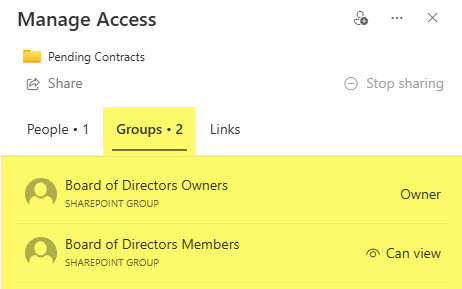
- The People Tab displays users who were invited to the file or folder via the Share feature. For example, in the example below, I shared the folder with John by clicking Share and typing his name.
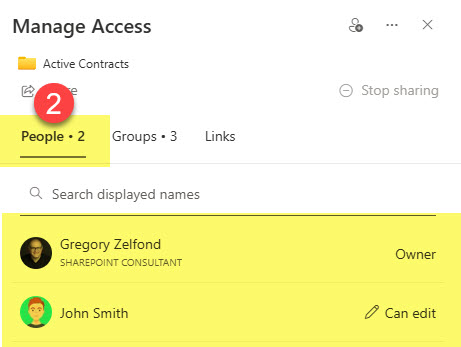
- The Links Tab displays users who were invited to a file or folder via the Copy Link feature.
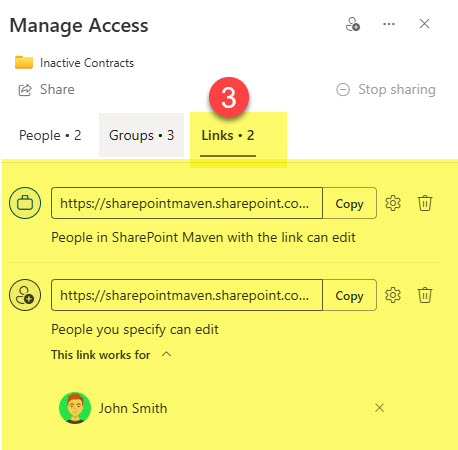
How to check whether a specific user has access to a file or folder
The technique above provides some information; however, sometimes, you might want to be 100% sure a specific user does have or does not have access to a given file or folder. For that, we can use the Check Permissions feature. Let me show you.
- From the Manage Access screen, click three dots in the upper-right-hand-corner and click on Advanced settings

- Click on Check permissions button
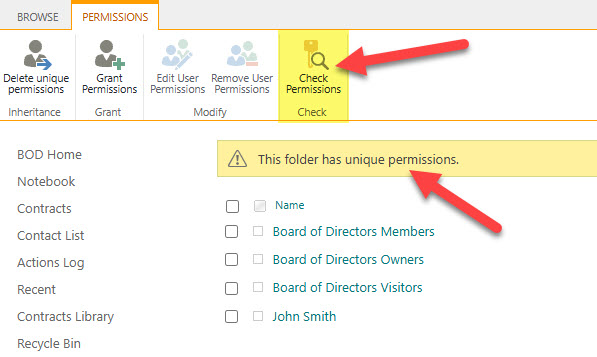
- Type in the name of the user and click Check Now. It will provide information on the user’s access to a given file or folder. For example, in the image below, it tells me that Mary has access to the folder by being a member of the Site Members SharePoint security group.

- The example below shows that John has access to a given folder via the Share/Copy Link feature.

- Finally, if the user does not have access to a folder at all (not a member of a site and the folder was never shared with the user via link), it will display None in such situations.



